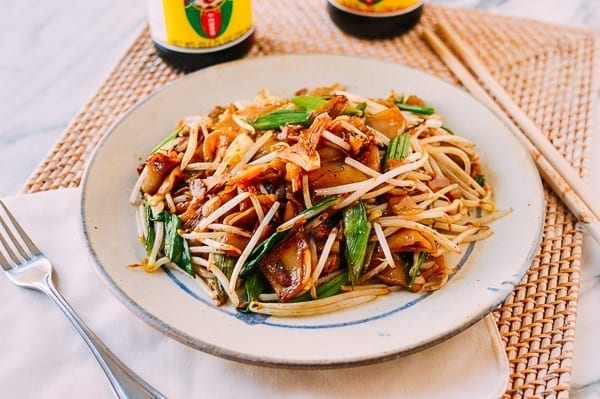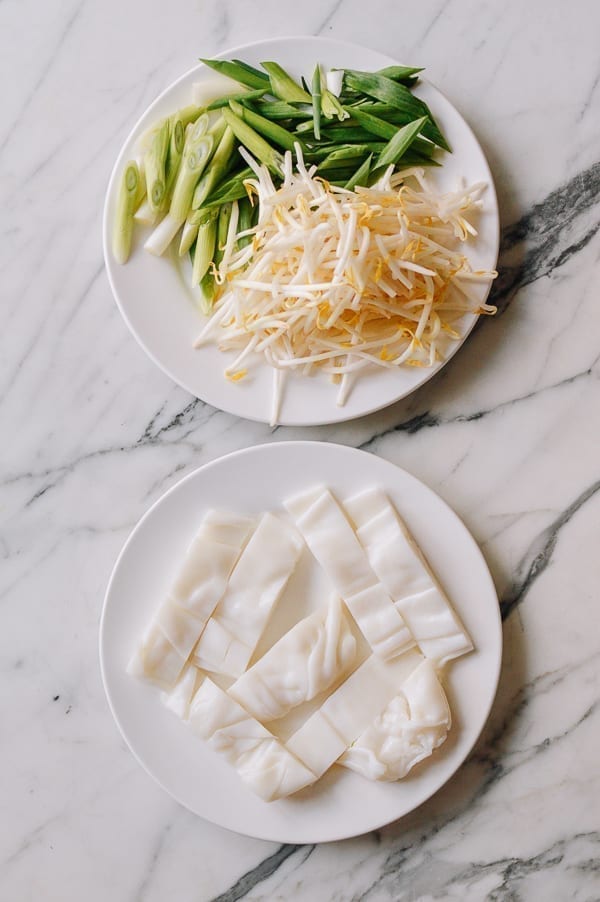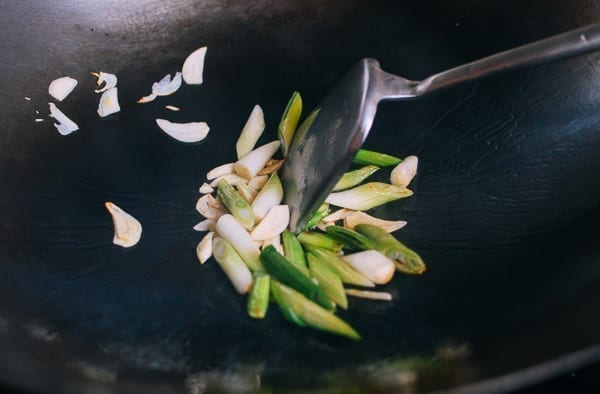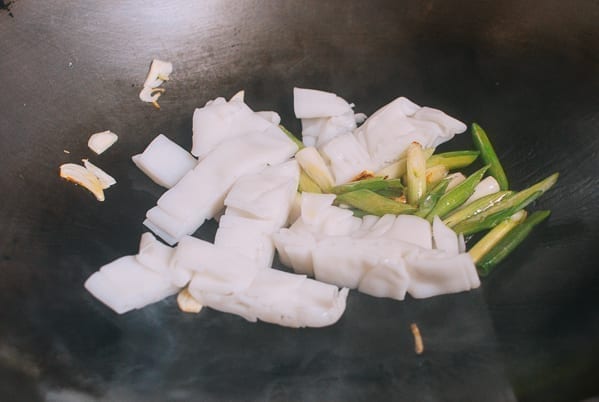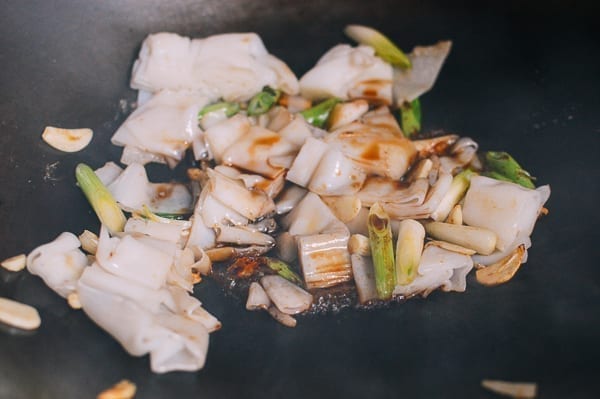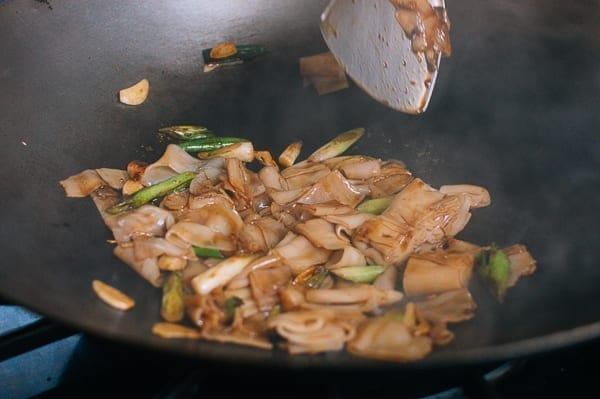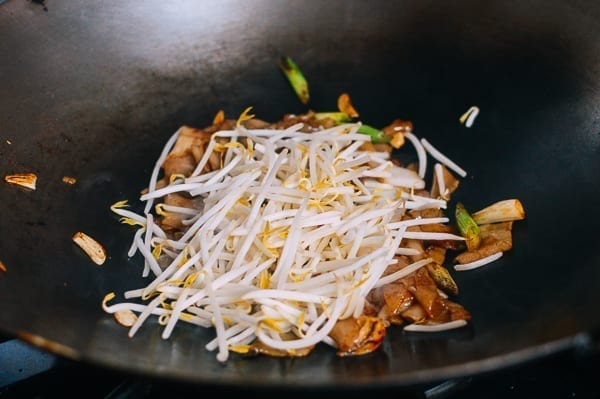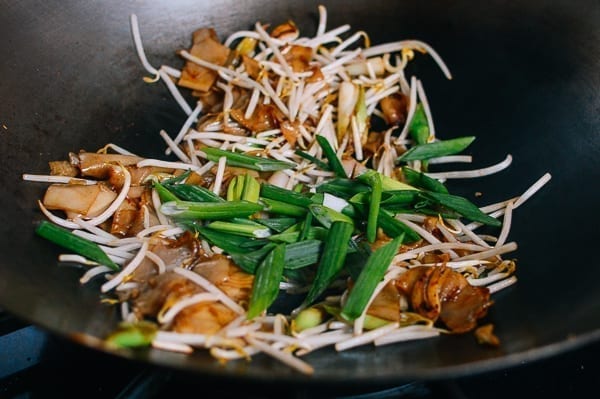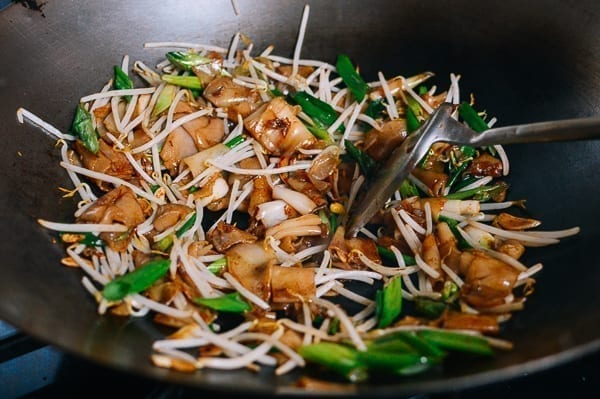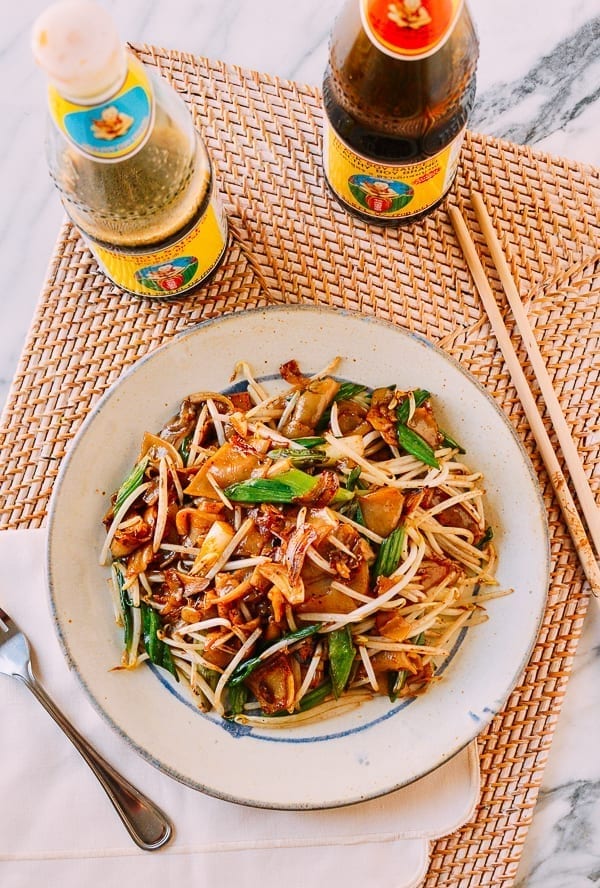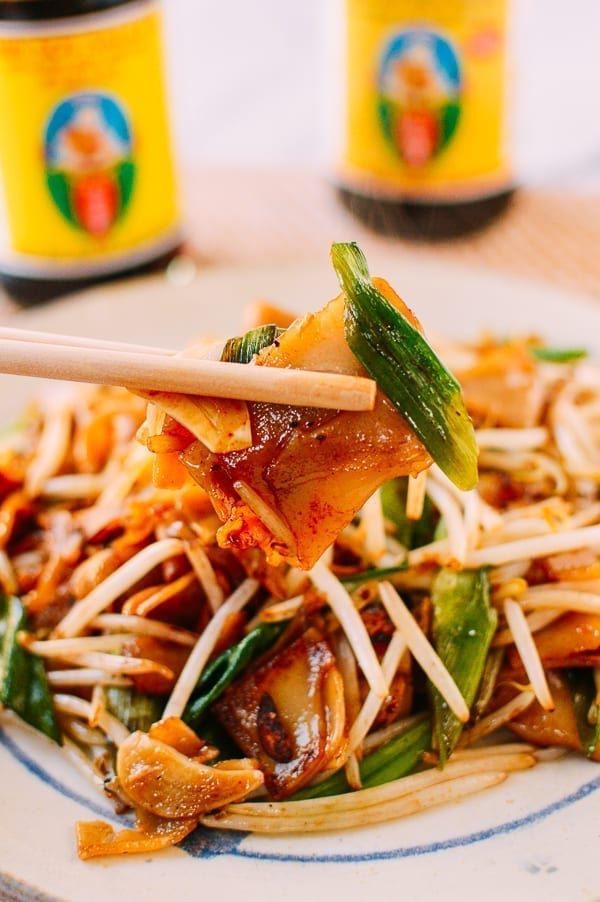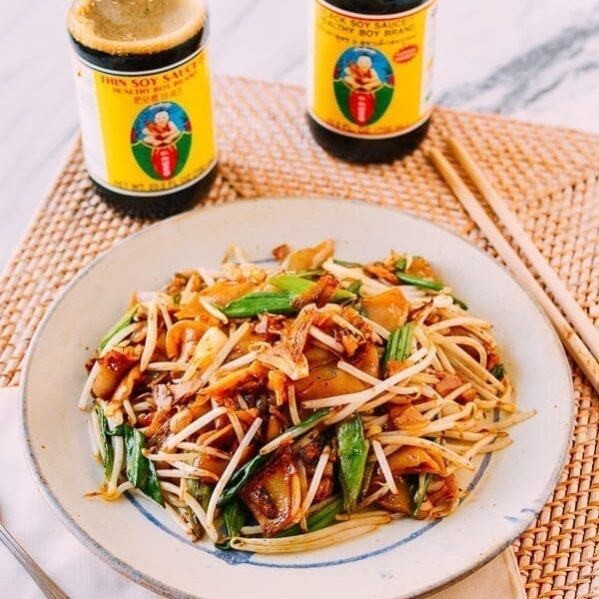Discovering “Poor Man’s Noodles”
Every so often, we get a hankering for Thai food. When we go out to eat, we love trying new restaurants and unfamiliar dishes. At a restaurant we’d never been to before, Judy and I were browsing the typical list of Thai noodle dishes. Old standbys included Pad See Ew, Drunken Noodles (Pad Kee Mao) and Pad Thai. But then I noticed something I’d never seen before. A dish called “Poor Man’s Noodles.” The name of the dish immediately caught my attention, and I ordered it. As I surmised, it was a very humble dish. Made with fresh wide rice noodles, mung bean sprouts, and scallions, all seared in a hot wok with a sweet Thai black soy sauce mixture. I assume it was invented as a sort of blue collar dish with simple vegetarian ingredients. It immediately reminded me of the simplicity of our Cantonese Soy Sauce Pan-fried Noodles. Though the restaurant gave the option of adding a protein, I decided to go meatless with this recipe, because sometimes the best dishes are the simplest ones.
A Note On Rice Noodles
Fresh wide rice noodles, also known as chow fun noodles or ho fun noodles, are one of my favorite ingredients. Consider yourself lucky if you can buy fresh rice noodles at your local Chinese market. You also have the option of making a homemade version following Judy’s recipe to make your own rice noodles. If you don’t want to make your own, you can use dried wide rice noodles, which are widely available in Asian markets. If you can’t find those, you can also use the thinner, more common Pad Thai style rice noodles.
Vegan Substitutions
You can make this noodle dish vegan if you leave out the fish sauce or use a vegan fish sauce. But for all you omnivores out there, I highly recommend using the fish sauce. It adds incredible umami and it’s one of the signature flavors of Thai cooking!
Poor Man’s Thai Noodles: Recipe Instructions
Remove the fresh rice noodles from the package and cut them into 1 ½ inch wide strips. If they were refrigerated, let them come up to room temperature and loosen them in some hot water. For more details, see our classic Beef Chow Fun recipe.
If you are using dried rice noodles, follow the directions on the package to cook them. You can also soak them in hot water until softened and re-hydrated––about 15 to 20 minutes. Drain thoroughly. There should be no visual moisture on the noodles. In a small bowl, dissolve the brown sugar in the hot water. Mix in the fish sauce (if using) and soy sauces. Set aside. Thai rice noodle dishes are generally sweeter than Chinese rice noodle dishes. I think this poor man’s noodle recipe has just the right balance of salty and sweet. That said, feel free to taste the sauce and adjust the amounts of sugar and soy sauce to your own taste. Heat your carbon steel wok until smoking, and spread 2 tablespoons canola oil around the perimeter of the wok. Getting your wok hot enough is the key to non-stick cooking and generating some “wok hay” flavor. Add scallion whites and garlic and Thai basil (optional) if you have some.
After 10 seconds, add the softened noodles.
Your wok should be screaming hot now. Continue to toss the rice noodles for 30 seconds to warm them up. Next, stir up your soy sauce mixture and pour it over the noodles.
Continue stir-frying for 1 minute until the noodles are well coated in sauce. They should get a good smoky sear on them.
Next, add the mung bean sprouts…
And the green portions of the scallions.
Stir-fry for 1 minute, until the bean sprouts and scallions are wilted.
Plate and serve with your favorite hot chili oil.
